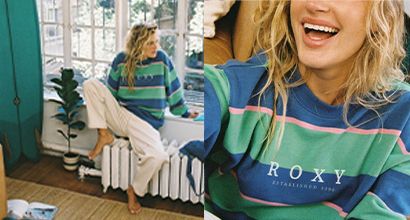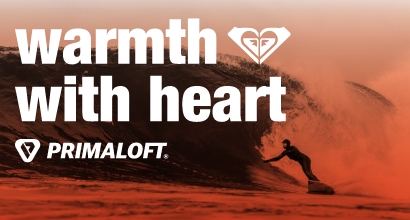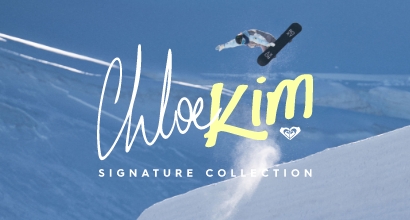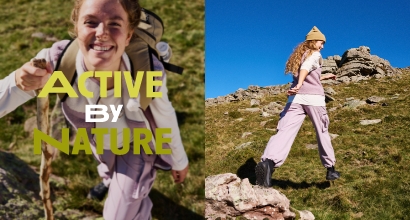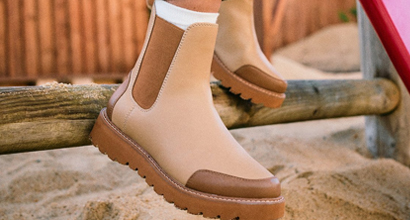How to choose snowboard jackets & snowboard pants?
Choosing the right snowboard jacket and snowboard pants isn’t easy, but once you know what you’re looking for, it’s not too hard, either. Using this guide, we’ll help you to find the outerwear combination that’s perfect for you.
When you shop for a snowboarding jacket or a snowboarding pant, what you’re basically doing is looking for highly technical outerwear that will keep you a) warm, dry and comfortable while performing b) a highly physical and athletic activity, in c) one of the planet’s most extreme environments – the mountains. Besides all of this, you also want it to d) look great, and be e) hardwearing and durable. Getting all of this dialled is a tall order, and with so many options out there, it’s vital to have a clear understanding of what you’re looking for, and some knowledge of what goes into a good snowboarding outerwear combo.
Let’s start off with taking an overview of the materials and construction methods used in creating snowboarding outerwear, then we’ll move onto more specific aspects related to jackets and pants.
Materials
Snowboarding is all about performing a very (fun) physical and athletic activity in what is likely to be very cold and wet weather conditions. For this reason, snowboarding outerwear needs to be lightweight and non-restrictive, while providing waterproof, breathable protection. For this reason, in nearly all cases the outerwear’s outer fabric will be made with polyester or nylon ‘face’ fabric, bonded with a water-resistant, breathable inner membrane. Both polyester and nylon are strong, have low moisture absorbency and are generally fast-drying and durable. Meanwhile, waterproof breathable membranes increase water resistance while allowing body moisture to escape.
However, these technical fabrics are only the starting point: most technical outerwear features several other technologies to enhance its waterproofness and breathability. For example, taped seams increase water resistance, and external durable water repellent (DWR) coatings enhance the outerwear’s protective capabilities: more on these technologies later.
Waterproofness/Breathability Ratings and how they work
Waterproofness in technical snowboard clothing is one of the most widely misunderstood aspects of the outerwear market. To be truly waterproof, a material cannot be breathable: it’s actually very easy (and cheap) to produce waterproof fabric. The challenge is to make a material that keeps water out while allowing moisture to escape. The principle of water-resistant, breathable fabric works on the basis that water vapour molecules are much smaller than water in its liquid state: by creating a material coated with a porous membrane with holes big enough to let vapour out and small enough to stop water from coming in, snowboard outerwear is able to protect the wearer from rain and snow while preventing the uncomfortable build-up of moisture from sweating.
These porous membrane coatings vary considerably in waterproofness, breathability (and cost), so to give the consumer an idea of how much protection they can expect, outerwear comes with a waterproof rating, in millimetres, and a breathability rating, in grams.
A waterproof rating is calculated by placing a column of water in a tube onto the fabric: the rating equals the height of the water column (measured in millimetres) before water starts leaking in. So if a column of water needs to be 10,000mm high before it starts pushing through, the fabric is given a 10k waterproofness rating. In the snowboard outerwear market, 5k waterproofness is generally seen as providing entry-level water resistance, while premium waterproof products like Gore-Tex are around the 20k mark.
| WATERPROOF RATING (MM) | WATER RESISTANCE | SUITABILITY |
|---|---|---|
| 0-5,000 MM | None to some resistance to moisture | Light Rain, Dry Snow, No Pressure |
| 6,000-10,000 MM | Rainproof and waterproof under light pressure | Light rain, average snow, light pressure |
| 11,000-15,000 MM | Rainproof and waterproof except under high pressure | Moderate rain, average snow, light pressure |
| 16,000-20,000 MM | Rainproof and waterproof under high pressure | Heavy rain, wet snow, some pressure |
| 20,000 MM+ | Rainproof and waterproof under very high pressure | Heavy rain, wet snow, high pressure |
Breathability is calculated in a similar way, this time by calculating how many grams (g) of water vapor can pass through a square meter (m2) of the fabric from the inside to the outside in a 24 hour period. The larger the number, the more breathable the fabric, so in the case of a 10k fabric, 10,000 grams of water vapour would escape over 24 hours.
Breathable Waterproof Fabric Layering
Waterproof breathable fabrics are made up of an outer layer called the “face fabric” which is usually made from nylon or polyester, and treated with DWR. Below the face fabric is a porous laminated membrane or coating that keeps water out and allows moisture to escape. Some fabrics have a 3rd layer of mesh bonded to the membrane, making it more durable and removing the need for a protective fabric liner. This is called 3L fabric. 2L fabric does not have this layer, and so requires a fabric lining to protect the membrane.
What Breathable Waterproof Rating is best for me?
As a jacket or pant’s rating goes up, so does the price, so it’s important to choose outerwear that’s a good match both for your intended use and your budget. A 5k waterproof rating offers limited protection in wet conditions, so it’s primarily meant for snowboarders who mostly ride in cold, dry conditions. Up to 10k waterproofness delivers solid performance in a wide range of conditions and is a good choice for most snowboarders. Upwards of 10k provides great protection from the elements and is recommended for snowboarders who spend a lot of time in the mountains, especially in wetter climates. A jacket or pant’s breathability rating is probably of less concern to the average snowboarder – however, if you’re going to be doing a lot of hiking and other high-intensity activities, then a high breathability rating of 20k+ is recommended.
With all that said, even beginners and occasional mountain users test the waterproofness of their gear to the limit, so if in doubt, it’s always a good idea to go for the highest rated material you can afford.
What is seam sealing?
Also known as seam taping, the seam sealing is an important part of the manufacturing process where a thin waterproof tape is applied under seams to prevent leakage through the tiny holes created by stitching needles. Full seam sealing is best, while critical seam sealing uses tape only on high exposure areas like the neck, shoulders, and chest. If the jacket or pants you’ve been considering has no seam seals, it's probably not suitable for snowboarding in anything but warm, dry conditions.
What is DWR?
DWR stands for Durable Water Repellent – this is an outer coating that repels water, causing it to bead off. Most outerwear fabrics receive this treatment in the factory, and it helps prevent the face fabric from absorbing water, making it heavier. Regular contact with snow can quickly wear a garment’s DWR coating away, making the face fabric damp so it seems that the outerwear is no longer waterproof. This is not the case, however: it’s the membrane below that is doing the waterproofing work. Once your jacket or pants has lost its factory DWR coating, it’s possible to replace it at home with 3rd party waterproofing products like Nikwax.
Fit
Snowboarding pants and jackets come in several types of fit, from slim to baggy. Because snowboarding is an extremely active sport, unrestricted freedom of movement is essential. This is virtually guaranteed with looser fitting jackets and pants, but when you are looking for a slimmer fit, features like articulated knees and elbows, along with stretch fabric panels can make all the difference. These are the three basic snowboarding outerwear fit categories.
Slim: The traditional mountain look, this slimmer athletic cut should move with you as you ride, and deliver a glove-like fit.
Modern: uses articulated joints and an ergonomic approach to provide a slimmer, more contemporary look with all the mobility of a relaxed fit.
Relaxed: Designed for maximum comfort and relaxed style, this baggier cut delivers unlimited freedom of movement on the mountain.
HOW TO CHOOSE A SNOWBOARD JACKET
What are the different types of snowboard jacket?
There are basically two types of snowboard jacket – insulated and un-insulated (shell). Within these two basic categories, there is a wide range of waterproofness, styles and features, which we’ll look at here.
Insulated Snowboard Jackets
Insulation is a key characteristic of snowboard apparel. The amount of insulation can vary from light to heavy, depending on the intended conditions. Some jackets feature removable insulation, usually a fleece layer that can be easily zipped in and out of the jacket. These are known as 3-in-1 jackets.
The choice of insulation on offer is wide, with synthetic materials being most common, due to their staying lighter and continuing to insulate when wet; they also dry faster than natural materials. Some insulation types work by puffing up and trapping air (loft) while others, like Thinsulate, are designed to provide insulation without making the jacket appear bulky.
When it comes to the maximum warmth-to-weight factor, natural down (harvested from geese and ducks) is still considered to be the premium insulation, especially when it is treated with a water-repellent coating. However, premium synthetic insulation such as Roxy’s Warmflight technology provides a best-of-both-worlds solution, combining the lightness and loft of natural down with the breathability and resistance to humidity that you get from modern synthetic materials.
Non-insulated Snowboard Jackets (Shell Jackets)
A shell jacket does not have any insulation: it is designed purely as a weatherproof barrier and the wearer is able to add or subtract layers below to suit the temperature. This makes shell jackets a popular choice for snowboarders looking for a jacket that can be worn in all conditions. If you are the type of snowboarder who loves to ride in the wettest, most extreme conditions and tackle long backcountry ascents, then a lightweight, technical shell is for you.
Should I choose a shell or an insulated jacket for snowboarding?
While the question of insulated or un-insulated outerwear is down to personal preference, it’s generally accepted that premium technical jackets and pants that offer maximum waterproofness and breathability tend to be un-insulated shells. But if you are looking for a cold weather jacket that feels warm and cosy as soon as you put it on, you can’t beat an insulated jacket.
Essential Snowboard Jacket Features:
Venting
No matter how breathable your jacket’s fabric, good ventilation is essential: snowboarding is a sport where you typically alternate between intense activity (riding) to rest (chairlift) multiple times a day, and venting is vital to dump excess heat and moisture buildup. Snowboard jacket vents are usually located around the armpit area and should be mesh-backed to prevent snow from getting in while riding with them open.
Snow skirt
A snow skirt, aka powder gaiter, is a flap of waterproof fabric with elastic on the bottom. It goes around the waist and keeps snow from coming up inside the jacket. Some are designed to be removable via a zip, while others feature a jacket-to-pant connection that allows them to connect to a compatible pant, creating a snow-proof seal that won’t ride up and let snow in when you wipe out.
Cuff gaiter
Usually made of lycra fabric, a cuff gaiter is an internal jacket sleeve with an attached thumb loop that slips inside the wearer’s glove, preventing loose snow from entering the wrist.
Pockets
The size, shape and number of pockets on any given snowboard jacket varies greatly – it’s all about personal preference – they are handy, but they also add weight and bulk to your jacket. Things to look out for when checking out a jacket’s pockets are waterproof zips or flaps to keep out moisture, ergonomic, easy-reach location and generously sized, glove-friendly access.
Hood
Essential for keeping you warm and dry in foul weather, hoods take many shapes and sizes. While some are removable, most snowboarding jacket hoods are not. When choosing your perfect snowboard jacket, always ensure that the hood has the following features:
- A high collar with drawstring tighteners. This can be pulled up over the face to keep out the wind. Look for a soft, skin-friendly lining to protect your lips and chin.
- Large, helmet-compatible design for comfort and freedom of movement.
Other (non) Essential Snowboard Jacket Features
There are a vast array of snowboard specific features on the market, from goggle wipes to lift pass holders to Recco® Avalanche reflectors. All have their uses, but they are mostly non-essential and should not distract you from the essentials, such as waterproofness, snow protection, and pockets.
HOW TO CHOOSE A SNOWBOARD PANT
What are the different types of snowboard pant?
Like jackets, snowboard pants come in a wide range of styles, technical performance and features. Because snowboarders tend to spend more time sitting on the snow to strap in or resting on their knees, waterproofness is especially important when choosing snowboard pants. There are basically four types of snowboard pant – insulated, un-insulated, shell and bib/overalls. Because the insulation is less important for the legs than the torso and most riders wear leggings or tights underneath, insulated pants usually contain light, low-profile synthetic insulation to add extra warmth without adding too much extra weight or bulk. un-insulated pants offer a liner for extra comfort, and shell pants are made with technical 3L fabrics that do not require a liner, and offer the most breathability. Bib or overall style pants are a fashionable and functional option that extends coverage up past the waistline, making them ideal both with a jacket in winter conditions and without in warmer spring conditions.
The other key aspect to a snowboard pant’s performance is durability. Boots, bindings and snowboard edges all take their toll on outerwear, so look out for reinforced cuffs around the ankle, and durable fabric on the knees.
Essential Snowboard Pant Features:
Venting
As with jackets, no matter how breathable your jacket’s fabric, good ventilation is essential for quickly dumping heat and moisture to help maintain a comfortable and dry personal climate. Snowboard pant vents should be mesh-backed to prevent snow from getting in while riding with them open.
Ankle Gaiter
Ankle gaiters are two internal sleeves of waterproof fabric with elastic on the bottom that is designed to stretch over the top of your snowboard boots, preventing snow from entering the pant leg from below. They often come with a snap-on tab or hook that attaches to the bootlace, securing the gaiter in place.
Pockets
As with jackets, the size, shape and number of pockets on any given snowboard trousers varies greatly and is all about personal preference. Whether you are looking for cargo, jeans or regular pocket styles, ensure they are seam-sealed, have adequate snow protection and do not restrict movement. Look out for waterproof zips or flaps to keep out moisture, ergonomic, easy-reach location and generously sized, glove-friendly access.
Other (non) Essential Snowboard Pant Features
There are a vast array of snowboard specific features on the market, from zip-up bottom leg gussets to lift pass holders to Recco® Avalanche reflectors. All have their uses, but, like jackets, it’s better to focus on the essentials, such as fit, waterproofness, snow protection, and pockets when choosing your perfect pair of snowboard pants.
Related Guides
How To Dress For Skiing: The Essentials

